Last updated on
Discover the simple process of accurately measuring kitchen cabinet pulls to elevate your home’s aesthetics and functionality.
Have you ever found yourself standing in the hardware store, staring at a wall of cabinet pulls, feeling completely overwhelmed? With so many sizes and styles to choose from, it can be tough to know where to start. But fear not! Measuring for cabinet pulls is a simple process that can make all the difference in achieving a polished and cohesive look in your kitchen.
In this article, we’ll walk you through the steps to measure for kitchen cabinet pulls like a pro. So grab your measuring tape and let’s get started!
What's Inside
Importance of Accurate Measurements
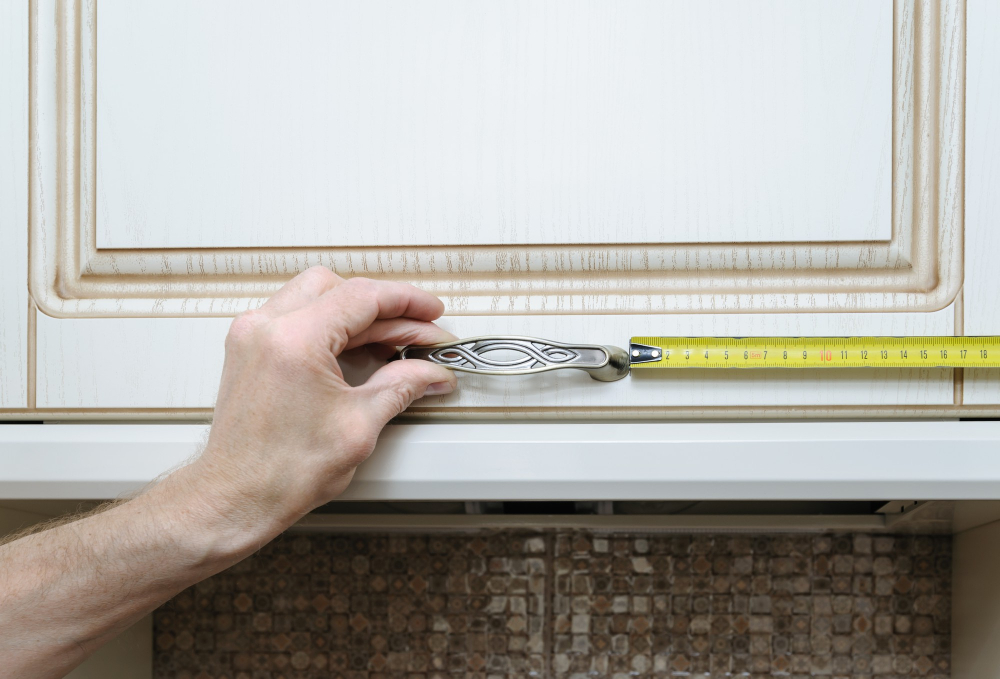
Without precise measurements, you risk purchasing the wrong size or style of pull that may not fit your cabinets properly. This can lead to a frustrating installation process, as well as an unappealing final result.
Moreover, accurate measurements ensure that your cabinet pulls will function optimally. Pulls that are too small or too large for their intended space can be difficult to grasp and use comfortably on a daily basis.
Measuring accurately allows you to choose the right style of pull for your cabinetry. Different styles require different hole spacing and length requirements; therefore taking proper measurement is essential in achieving a cohesive look throughout your kitchen.
Types of Cabinet Pulls
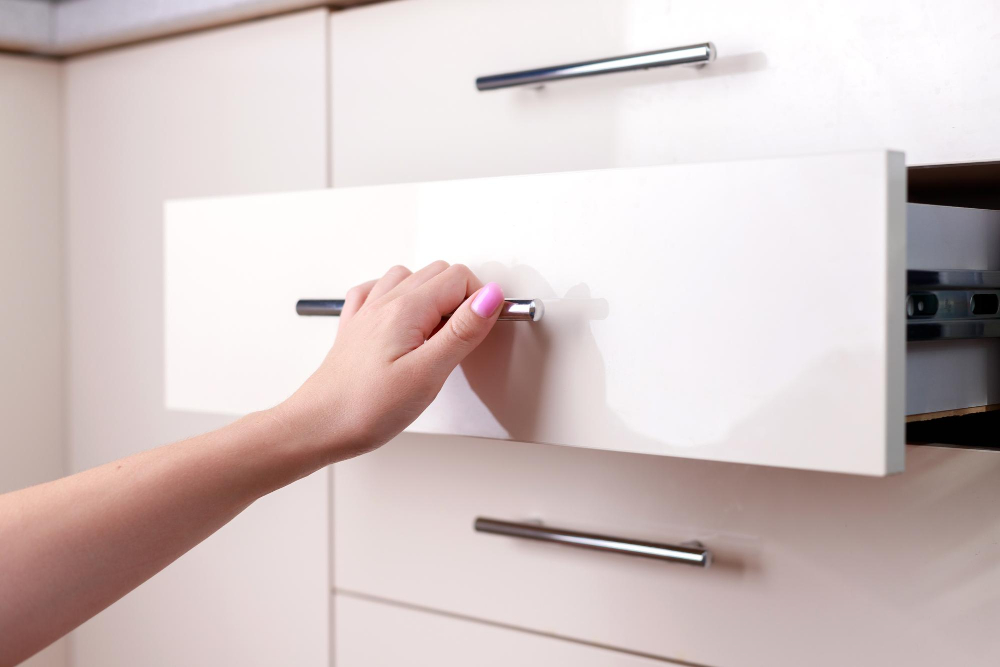
The most common styles include bar pulls, cup pulls, finger pulls, and knob-style handles. Bar or handle-style cabinet pulls are long and narrow with straight lines that provide a modern look.
Cup or bin-style cabinet hardware has an open top that resembles the shape of a cup or bin for easy access when opening cabinets. Finger pull hardware is recessed into the door edge for minimal visibility while still providing functionality.
Knob style handles come in various shapes such as round knobs which offer simplicity and elegance; square knobs which add contemporary flair; oval-shaped knobs which give off traditional vibes; novelty shaped ones like animal heads etc., perfect for adding personality to your kitchen decor.
Choosing the right type of pull depends on personal preference as well as practicality – consider factors such as ease-of-use (especially if you have young children), durability over time (for example if you’re looking at rental properties) and overall aesthetic appeal in relation to your cabinetry style.
Tools Needed for Measuring Cabinet Pulls
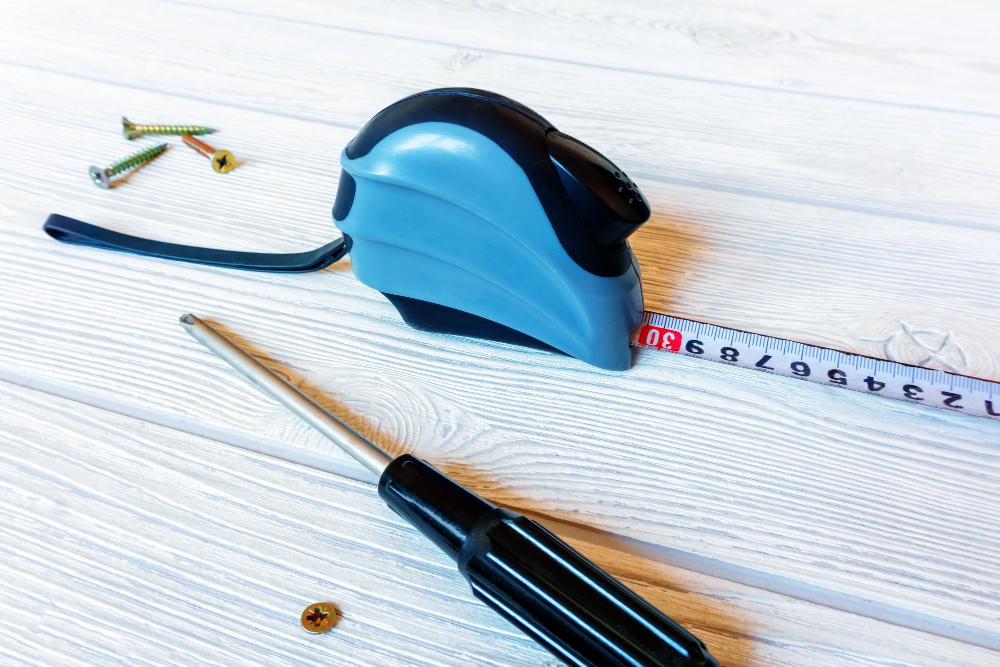
First and foremost, you’ll need a measuring tape. A retractable metal tape measure is the most accurate option for this task as it can easily bend around corners and curves to get precise measurements.
In addition to the measuring tape, you may also want to have a pencil or pen on hand to mark down your measurements as well as any notes about specific cabinets or drawers that require unique pull sizes.
If you’re planning on installing new cabinet pulls yourself (rather than hiring a professional), make sure that you have all of the necessary installation tools such as screwdrivers and drill bits before beginning your project.
Understanding Hole Spacing
This refers to the distance between the centers of two screw holes on a pull. The most common hole spacing measurements are 3 inches and 96 millimeters, but there are many other sizes available as well.
To determine your cabinet’s hole spacing measurement, measure from the center of one screw hole to the center of another on an existing pull or drawer handle. If you’re starting from scratch with new cabinets or drawers that don’t have any hardware installed yet, check with your manufacturer for their recommended sizing.
It’s crucial that you accurately measure your cabinet pulls’ hole spacing because this will ensure they fit perfectly onto your cabinetry without any gaps or misalignments. If you plan on replacing old hardware with new ones but want to keep using existing holes in order not damage woodwork unnecessarily then understanding proper placement is essential.
Measuring Cabinet Pull Length
The first step is determining the length of your cabinet pulls. This measurement will help ensure that your pulls are proportionate to the size of your cabinets and drawers.
To measure pull length, place one end of a tape measure at one end of the pull where it attaches to the cabinet or drawer face. Then, stretch out the tape measure along its entire length until you reach where it attaches on other side.
It’s important not to include any decorative elements or curves in this measurement; only take into account straight sections from attachment point-to-attachment point.
Measuring Hole Spacing

This measurement is crucial because it ensures that your new hardware will fit perfectly into the existing holes in your cabinetry. Measuring hole spacing is a simple process that requires only a measuring tape.
To begin, measure from the center of one screw hole to the center of another on an existing pull or drawer handle. If you’re starting from scratch and don’t have any pre-existing holes, determine where you want them to be placed and mark those spots with a pencil.
It’s important to note that some cabinet pulls come with multiple sets of screw holes spaced at different intervals for added flexibility during installation. In this case, make sure you are measuring from one set of screw holes rather than assuming they are all evenly spaced.
When shopping for new hardware, pay close attention to each product’s specifications as they may vary slightly in terms of their recommended hole spacing measurements.
Determining Pull Width
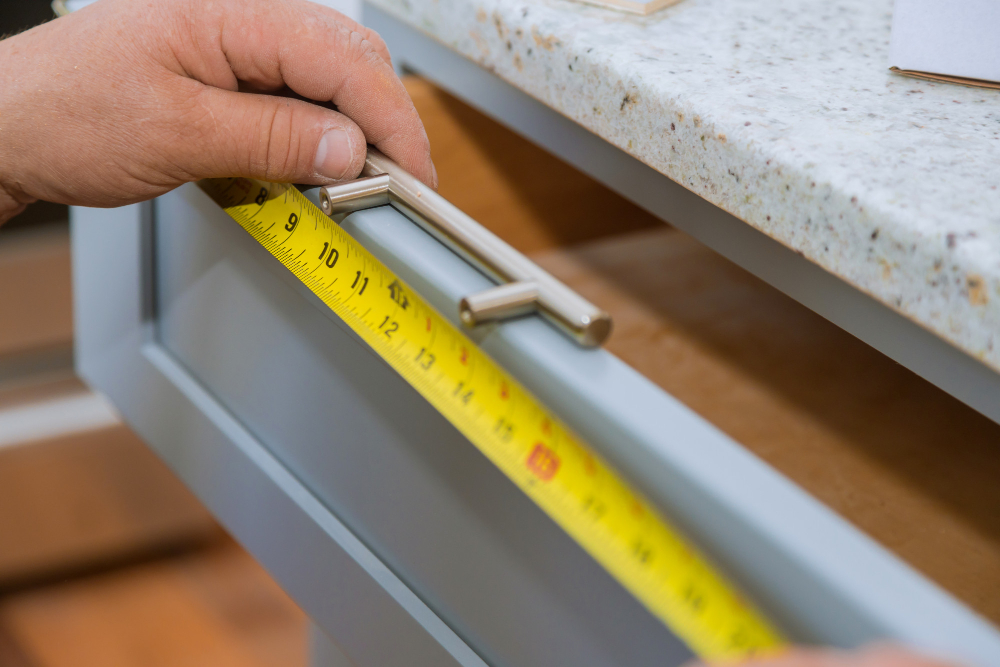
The width of a cabinet pull is simply the distance between its two outermost points. To measure this, place your measuring tape at one end of the pull and stretch it across to the other end.
It’s important to note that some pulls may have wider or narrower bases than their handles. In these cases, be sure to measure both parts separately and add them together for an accurate total width measurement.
When selecting pulls for cabinets with multiple doors or drawers side by side, consider choosing a size that will span across all openings evenly. This will create a cohesive look and prevent any awkward gaps between pulls.
Assessing Pull Depth

The depth of a pull refers to how far it extends from the surface of your cabinetry. This measurement is important because if a pull is too shallow, it can be difficult to grip and may not provide enough clearance for your fingers.
To measure pull depth accurately, place one end of your measuring tape at the center point on the backside of the cabinet door or drawer front where you plan to install each handle. Then extend outwards towards yourself until you reach where you want its tip or end (whichever protrudes more) should sit when installed.
It’s essential that this measurement is taken with precision as even small variations in depth can make a significant difference in comfort and functionality over time.
Measuring Pull Projection
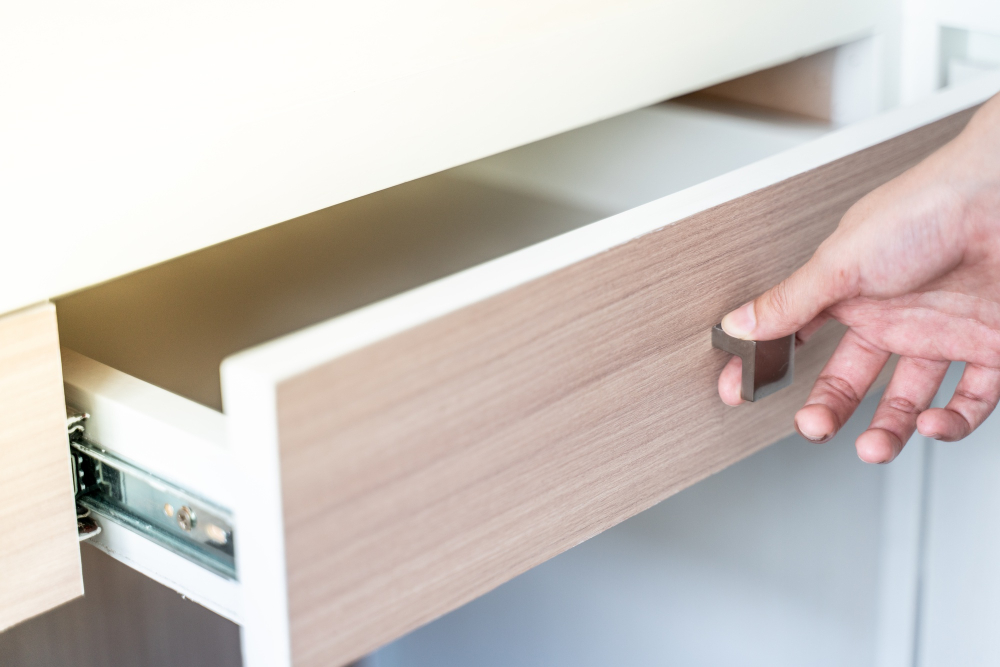
This measurement is important to ensure that your pulls are comfortable to grip and easy to use. A projection that’s too short can make it difficult for larger hands or fingers, while a projection that’s too long can look awkward and out of place.
To measure for pull projection, start by placing one end of your measuring tape at the center point on one hole where you plan to install the cabinet pull. Then extend it straight out until you reach the furthest point on the front face of your cabinetry where you want your handle or knob installed.
Be sure not to include any decorative elements like bevels or raised panels in this measurement as they may interfere with how far out from cabinets’ surfaces handles will protrude.
Calculating Overall Length

This measurement is crucial in ensuring that your pulls are properly centered on each cabinet door or drawer front.
To calculate overall length, simply add together the pull length and hole spacing measurements. For example, if your pull measures 4 inches long with a hole spacing of 3 inches, then your overall measurement would be 7 inches.
It’s important to note that some manufacturers may list their pulls by center-to-center (CTC) measurements rather than total length. In this case, you’ll need to convert CTC measurements into total lengths by adding or subtracting half an inch from each end depending on whether there are two or three holes in the pull.
Choosing the Right Size Pulls
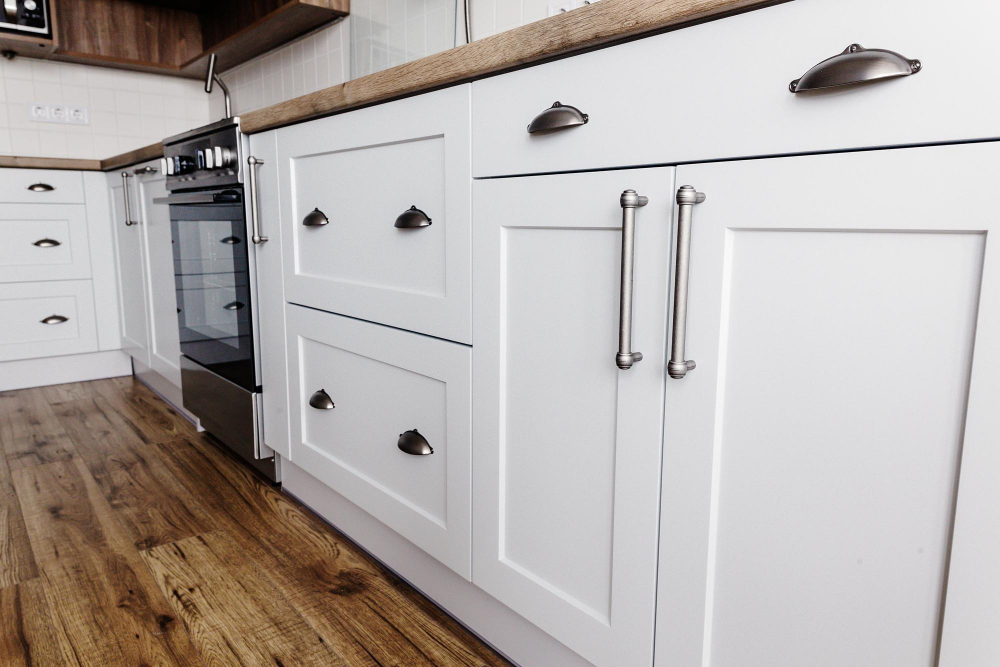
The size of your cabinet pulls should be proportional to the size of your cabinets, drawers, and overall space. Large or oversized pulls can overwhelm smaller cabinets while small or undersized ones may not provide enough grip for larger doors.
When selecting pull sizes, consider both length and width measurements. Pull length refers to the distance between mounting holes while pull width measures how wide the actual handle is.
It’s important to measure these dimensions accurately before making any purchases.
Another factor that affects pull sizing is personal preference and comfort level when using them daily. Some people prefer longer handles for easier gripping while others opt for shorter ones that blend seamlessly with their cabinetry.
Matching Pull Style to Cabinetry
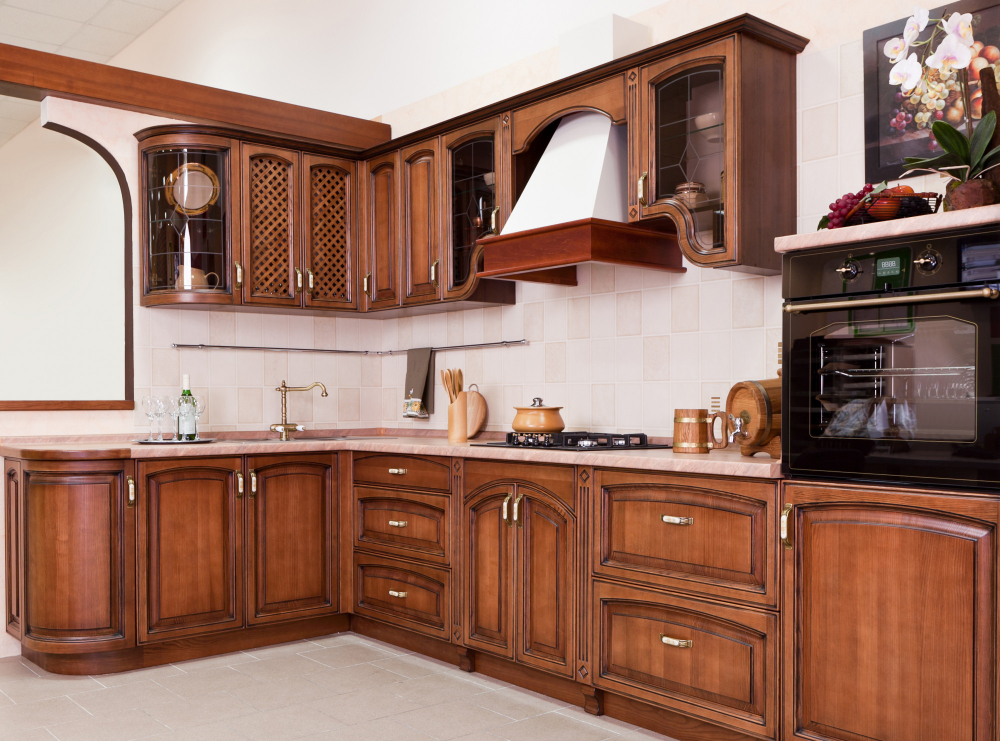
The hardware you select should complement your cabinetry and enhance the overall look of your kitchen. If you have a traditional or classic-style kitchen, consider opting for more ornate pulls with intricate details like beading or filigree.
For modern kitchens, sleek and simple designs work best.
Another factor to consider when matching pull style to cabinetry is color and finish. If you have dark wood cabinets, try selecting lighter-colored hardware that will stand out against the darker background without clashing with it.
Conversely, if your cabinets are light in color or painted white, darker finishes like oil-rubbed bronze can add depth and contrast.
Tips for Choosing Pull Finish
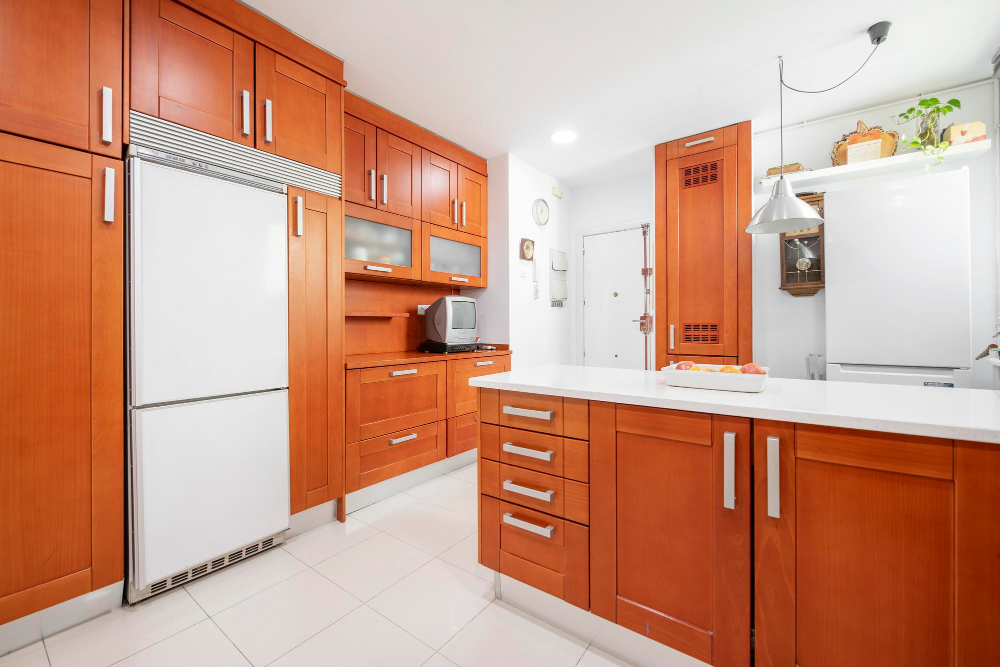
First and foremost, you’ll want to think about the overall style of your kitchen. Are you going for a sleek modern look or something more traditional? If your cabinets have a lot of detail or ornate features, you may want to opt for pulls with an antique brass or oil-rubbed bronze finish.
On the other hand, if your cabinetry is simple and streamlined, stainless steel or polished chrome pulls can add just the right amount of shine.
Another factor to consider when selecting pull finishes is durability. Kitchen hardware gets used frequently and can be subject to wear and tear over time.
Choosing high-quality materials like solid brass or stainless steel will ensure that your pulls hold up well over time.
Lastly, don’t forget about maintenance! Some finishes require more upkeep than others – for example, polished nickel can show fingerprints easily while matte black hides them well but may show scratches more readily.
Proper Positioning of Cabinet Pulls

The placement of your pulls can greatly impact both the functionality and aesthetics of your cabinets.
When deciding on where to position your cabinet pulls, there are a few key factors to keep in mind. First, consider how you will be using them – will they be used primarily by adults or children? This can affect the height at which they should be placed.
In general, most people find that placing their cabinet pulls about 2-3 inches from the top corner of each door or drawer works well. However, this may vary depending on personal preference and accessibility needs.
Another factor to consider is symmetry – if you have multiple drawers or doors next to each other, it’s often best to place the handles at an equal distance from both edges for a balanced look.
Don’t forget about clearance space! Make sure that there is enough room between adjacent cabinets so that when one handle is pulled outwards towards its corresponding side another handle doesn’t hit against it causing damage over time.
Measuring for Accessibility and Comfort

After all, you’ll be using these pulls every day! To ensure that your new hardware is easy to use and comfortable on your hands, take into account the size of your cabinets and drawers as well as their location.
For lower cabinets or drawers that are closer to the ground, larger pulls may be more comfortable for those with mobility issues or arthritis. Similarly, if you have upper cabinets that are difficult to reach without a step stool or ladder, smaller knobs may make opening them easier.
Think about how many fingers will fit comfortably around each pull. A pull that is too small can cause discomfort over time while one that is too large can feel awkward in smaller hands.
Tips for Successful Installation
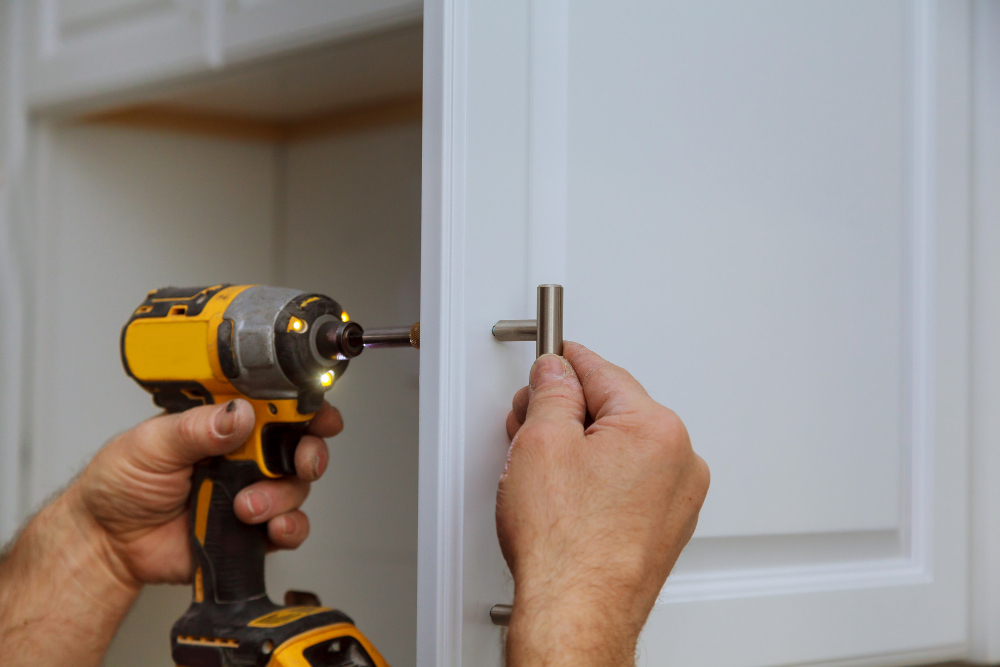
Here are some tips for a successful installation:
1. Use a template: A template can help ensure that all of your pulls are installed at the same height and distance from the edge of the cabinet.
2. Pre-drill holes: To avoid splitting or cracking your cabinetry, pre-drill holes before installing screws.
3. Check alignment: Before tightening screws completely, check that each pull is level and aligned with neighboring cabinets.
4. Don’t over-tighten screws: Over-tightening can cause damage to both the screw and cabinetry material; tighten until snug but not too tight.
5. Test functionality: Once all pulls have been installed, test their functionality by opening and closing drawers/cabinets several times to make sure they operate smoothly without any issues.
Common Measuring Mistakes

Here are some common errors to avoid when measuring for kitchen cabinet pulls:
1. Measuring from the wrong starting point: Always measure from the center of one screw hole to the center of another.
2. Not accounting for projection: Pulls that stick out too far or not enough can be uncomfortable and awkward to use.
3. Forgetting about clearance: Make sure there is enough space between your pull and any surrounding obstacles like drawers or other hardware.
4. Ignoring symmetry: If you’re installing multiple pulls on a single drawer front, make sure they are evenly spaced and aligned with each other.
5. Failing to double-check measurements before purchasing: It’s always better to be safe than sorry! Double-check your measurements before making a purchase so you don’t end up with ill-fitting hardware.
Proper Maintenance of Cabinet Pulls

Regular cleaning can help prevent buildup of dirt and grime that can dull the finish or damage the hardware over time. To clean your cabinet pulls, simply wipe them down with a soft cloth dampened with mild soap and water.
Avoid using abrasive cleaners or harsh chemicals that could scratch or discolor the surface.
If you have metal cabinet pulls, consider applying a coat of wax periodically to protect against tarnishing and corrosion. Be sure to follow manufacturer instructions for any specific care recommendations based on material type.
In addition to regular cleaning, it’s also important to check your cabinet hardware periodically for loose screws or other signs of wear and tear. Tighten any loose screws as needed using a screwdriver appropriate for the size of screw head.
FAQ
How do I know what size cabinet pulls to get?
To determine the appropriate cabinet pull size, choose a pull length approximately 1/3 the height of the cabinet door and 1/3 the width of the cabinet drawer, ensuring the pull design is consistent.
What size cabinet pulls for 42 inch cabinets?
For 42-inch cabinets, it is recommended to use pulls longer than 12 inches.
What is the standard size for kitchen cabinet pulls?
The standard sizes for kitchen cabinet pulls on standard size cabinetry (12″-36″) are 3″, 4″, 96mm, and 128mm center to center, with standard knob sizes of 1 1/4″ or 1 3/8″.
How can I choose the appropriate cabinet pull style to match my kitchen design?
To choose the appropriate cabinet pull style for your kitchen design, consider the overall theme, materials, and colors of your kitchen, then select a pull that complements and enhances those elements.
What are the various materials and finishes available for kitchen cabinet pulls?
Cabinet pulls come in a variety of materials and finishes, such as brass, bronze, chrome, nickel, stainless steel, and even glass, allowing homeowners to match their kitchen’s style and aesthetic.
Is there a specific guideline for the placement of cabinet pulls on different types of cabinets?
Yes, specific guidelines for placing cabinet pulls include positioning them on upper cabinets 2.5-3 inches from the corner and on lower cabinets 2.5-3 inches from the top edge.




